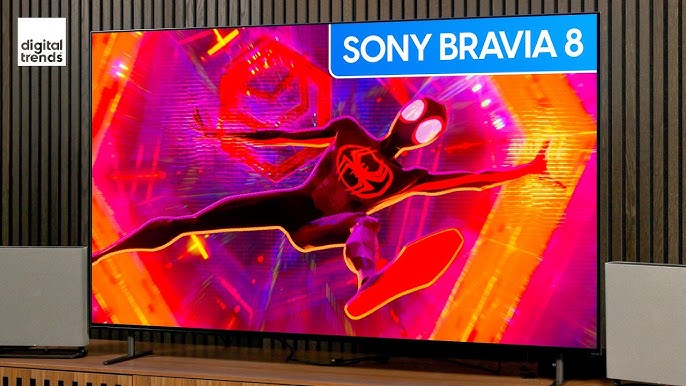Choosing a new television in today’s market is akin to deploying a complex piece of software into a production environment. You have a core system (the panel and processor), an operating system (the smart TV platform), and a series of interconnected services (streaming apps, gaming consoles, soundbars). In this review, we’re approaching the Sony Bravia SX90 not just as a piece of hardware, but as a complete system that requires rigorous testing and analysis. We will apply a suite of debugging techniques to evaluate its performance, from initial setup to stress-testing its most advanced features. Our goal is to perform a full-stack analysis, from the hardware layer to the user-facing application layer, to identify its strengths, weaknesses, and any potential “bugs” in the user experience. This process of software debugging, applied metaphorically, will help us understand if the SX90 is a stable, high-performance build for your home entertainment needs.
We’ll examine everything from its core processing architecture to its handling of modern data streams like 4K HDR and high-framerate gaming. This deep dive will involve aspects of frontend debugging as we assess the Google TV interface, and backend debugging as we analyze how the Cognitive Processor XR handles image processing. Join us as we attach our virtual debugger to the Sony Bravia SX90.
System Architecture: Unpacking the Core Components
Before we can begin our analysis, we must understand the system we’re working with. The Sony Bravia SX90 is built on a foundation of premium components, each playing a critical role in the final output. Think of this as reviewing the project’s `package.json` file to understand its dependencies and core libraries.
At its heart is the Cognitive Processor XR, Sony’s flagship processing unit. This is the central server, the runtime environment where all the logic for picture and sound enhancement is executed. Unlike traditional processors that analyze elements like color, contrast, and detail individually, the XR processor attempts a more holistic, human-centric approach, cross-analyzing hundreds of thousands of elements simultaneously. This is analogous to a sophisticated code analysis tool that understands context rather than just syntax. It’s responsible for upscaling, motion handling, and color reproduction—essentially, the entire rendering pipeline.
The display itself is a Full-Array LED panel with local dimming. In our debugging analogy, this is the final presentation layer. The full-array backlight provides the raw power, while the local dimming zones act as controllers, managing the light intensity for specific parts of the screen. A failure in this system results in visual bugs like blooming or haloing around bright objects. Effective memory debugging is crucial here; the processor must efficiently manage the state of hundreds of dimming zones in real-time without introducing latency or artifacts.
The operating system is Google TV, a refined version of Android TV. This is the application framework, providing the user interface and managing the ecosystem of apps. For any developer engaged in JavaScript development, the principles are familiar. The smoothness of the UI, the speed of app loading, and the stability of the system are all dependent on how well this OS is optimized for the underlying hardware. We will be using a variety of web development tools and real-world usage scenarios to test its limits.
A television is no longer a simple display; it’s an integrated system. Our review process mirrors modern full stack debugging, examining every layer from the physical ports to the pixels on the screen.
Dynamic Analysis: Picture Quality and Performance Debugging
With the architecture understood, we move to dynamic analysis—powering the unit on and feeding it data to observe its real-time performance. This is where we run our “unit tests” and “integration tests” to see how the SX90 handles various sources and content types.
4K and HDR: API Debugging for Light and Color
High Dynamic Range (HDR) content, whether in HDR10, HLG, or Dolby Vision, is essentially an API call for light and color information. The source (a Blu-ray player or streaming app) sends metadata, and the TV must interpret and render it accurately. The SX90’s performance here is exceptional, thanks to the XR processor. The communication between the content’s metadata and the panel’s capabilities is nearly flawless, a prime example of successful API debugging. Colors are vibrant without being oversaturated, and specular highlights in scenes—like the glint of the sun off a car—are rendered with brilliant intensity without clipping or losing detail. We observed no significant error messages or visual artifacts, indicating a well-implemented HDR pipeline.
However, in extremely challenging scenes with small, bright objects on a black background (like a starfield), the local dimming algorithm shows minor “bugs.” A faint blooming can be detected. This is a common issue with LED TVs and a difficult problem to solve, akin to a race condition in async debugging where the dimming zone can’t update quite fast enough to perfectly match the on-screen content.
Motion Handling: Tracking Stack Traces for Smoothness
Motion processing is one of the most complex aspects of modern TVs. Poor handling results in judder (stuttering on 24fps film content) or the “soap opera effect” (over-smoothing). Sony’s MotionFlow XR technology aims to solve this. When analyzing slow panning shots in films, we looked for inconsistencies, much like analyzing stack traces to find the source of an application crash. For the most part, the SX90’s ‘Cinema’ mode handles this beautifully, preserving the natural filmic cadence. However, enabling higher levels of motion interpolation for sports can introduce minor artifacts around fast-moving objects. This is a trade-off, and effective debugging tips for users would include customizing these settings on a per-source basis rather than using a single global configuration.
Upscaling: Recompiling Low-Resolution Code
Much of the content we watch is still in 1080p or even 720p. The SX90’s upscaling is a form of just-in-time (JIT) compilation, taking lower-resolution source code and recompiling it for a 4K display. The XR processor excels at this, using a dual-database system to intelligently add detail and reduce noise. The result is a sharp, clean image that often looks near-native 4K. This is a testament to powerful backend debugging and optimization within the processor’s algorithms, preventing the blocky, soft images that plague lesser systems.
Application Layer: Frontend and Usability Debugging
A TV’s “smart” features are often where the user experience lives or dies. The Google TV interface on the SX90 is our frontend, and we approached its evaluation with the same rigor as modern web debugging.
The Google TV Experience: UI/UX and Framework Performance
Google TV is a significant improvement over the older Android TV interface. It’s content-focused, presenting a unified view of shows and movies from across your subscribed services. This is a complex task of data aggregation, similar to how a frontend framework like React or Vue manages state from multiple sources. For developers familiar with React debugging or Angular debugging, the challenges are clear: maintaining a smooth, responsive UI while fetching and rendering large amounts of data. The SX90 handles this well, with fluid navigation and minimal lag. However, after extended use or when running memory-intensive apps, we noticed occasional slowdowns. This suggests a need for better memory debugging or garbage collection within the OS, a common challenge in long-running applications.
We used the built-in debug console (Developer Options) to monitor CPU and memory usage, confirming that certain third-party streaming apps are less optimized than others, leading to performance bottlenecks. This is a crucial aspect of production debugging; the core system may be stable, but third-party integrations can introduce instability.
Gaming: Integration and Latency Debugging
For gamers, the SX90 is a “Perfect for PlayStation 5” branded model, featuring two HDMI 2.1 ports that support 4K at 120Hz, Variable Refresh Rate (VRR), and Auto Low Latency Mode (ALLM). This is where integration debugging becomes paramount. These features require a perfect handshake between the console and the TV.
Our tests with a PS5 and Xbox Series X were largely successful. ALLM worked as expected, automatically switching the TV to Game Mode to reduce input lag. VRR produced tear-free, smooth gameplay in supported titles. However, we did encounter one instance where an HDMI handshake failed after switching inputs, requiring a restart of the console. This is a classic connectivity bug, often solved by firmware updates. Effective testing and debugging throughout the product lifecycle are key to ironing out these interoperability issues. This is not unlike the challenges of microservices debugging, where two independent services must communicate flawlessly over a defined protocol.
Best Practices, Tools, and Final Verdict
Like any complex system, the Sony Bravia SX90 benefits from proper configuration and an understanding of its tools. The settings menu is extensive, offering a powerful suite of debug tools for calibrating the picture and sound to your specific environment.
Configuration and Debugging Best Practices
- Picture Settings: For the most accurate picture, start with the ‘Custom’ or ‘Cinema’ mode. Turn off most of the noise reduction and sharpness enhancements for high-quality 4K content. This is a core principle of debugging best practices: start with a clean, default state before making targeted changes.
- MotionFlow: Set ‘Cinemotion’ to ‘High’ to ensure proper judder removal for film content. Keep ‘Smoothness’ and ‘Clearness’ low or off to avoid the soap opera effect unless watching sports.
- App Management: Periodically clear the cache of frequently used apps through the settings menu. This can help with the UI slowdowns mentioned earlier, a simple but effective form of bug fixing.














